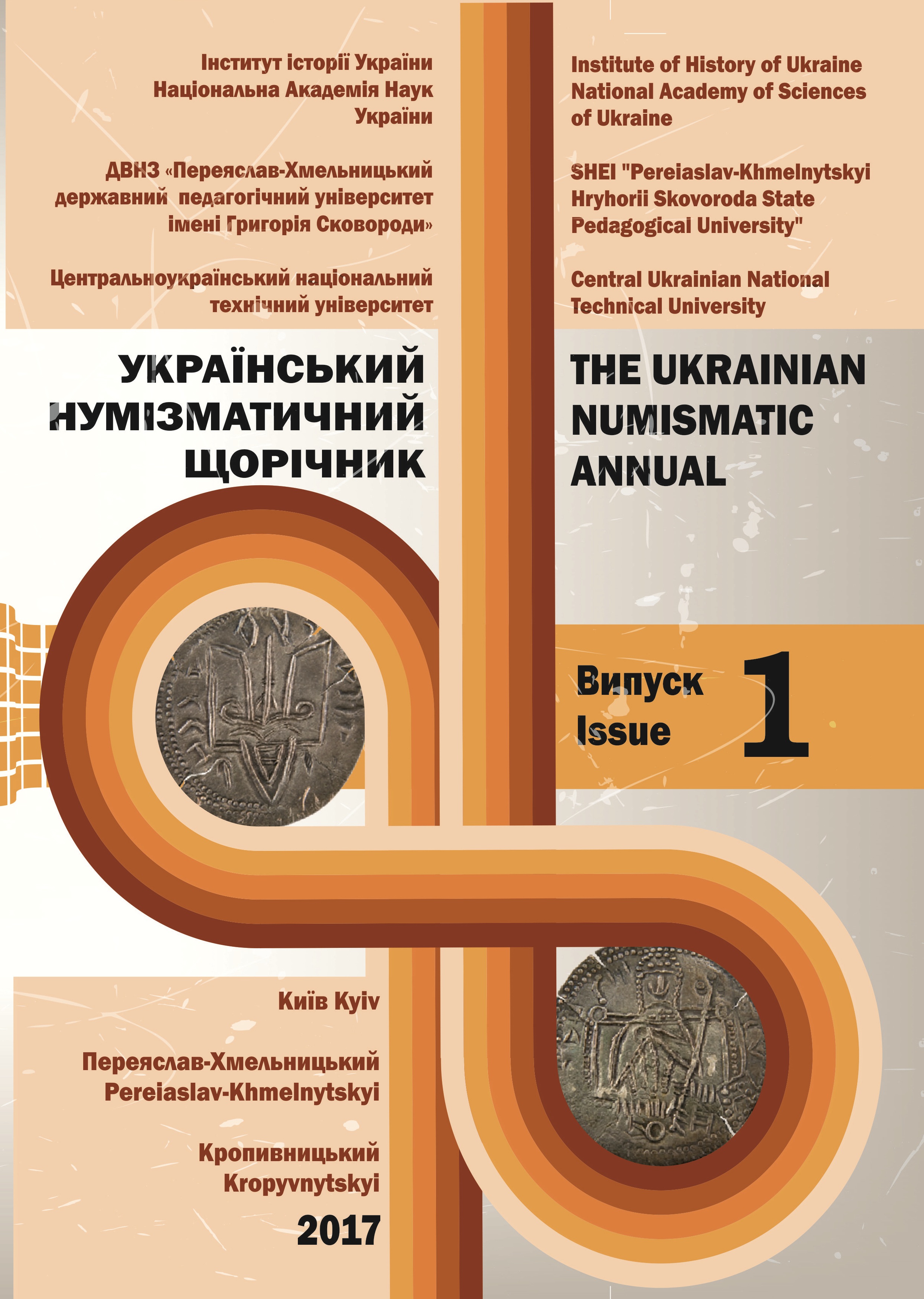PO RAZ KOLEJNY O „SKARBIE” Z CZERNIJOWA . „SKARB PIELGRZYMA DO ZIEMI ŚWIĘTEJ”. CZY TYLKO FANTAZJA
Once more on the«Hoard»from cherniyevo. «The hoard of a pilgrim to the holy land», Or just phantasy?
Author(s): Mariusz MielczarekSubject(s): Archaeology, Economic history, Ancient World, 16th Century, 19th Century
Published by: ДВНЗ Переяслав-Хмельницький державний педагогічний університет імені Григорія Сковороди
Keywords: pilgrim treasure; Holy Land; ancient coins;
Summary/Abstract: The information, that in 1876 or in 1878 in Cherniyevo village, not far from Stanislavov (at present Ivano-Frankovsk), that a vase full of coins was found by the local priest, was, and is many times, repeated In the numismatic and archaeological literature. The ‘big vase’ consisted of ‘Roman, Palestinian, Arabian and Byzantine coins’. Only 45 pieces were rescued by Aleksander Czołowski (1865-1934). According to the description of B. Janusz among these 45 pieces were coins of ‘Alexander Janneus (105-79), Herod Agrippa (48-99), Augustus, Iulia Augusta, Tiberius (14-37), Nero (54-68), the colony of Ascalon, Antiochus II, the colony of Nicea , Constantine the Great, Valentinian, as well as Judean, Byzantine and Arabian pieces’ (the original form of the note is preserved). The Cherniyevo hoard is similar to the finds from Kaniazja Krynitsa and ‘Galicja”’ which are often considered to be the remains of local numismatic collections. The key to understanding the ‘Pilgrim hoard’ is the activity of Alexander Czołowski, an eminent historian and archivist from Lvov, with a great knowledge of archaeology and numismatics, devoted to the conception of protecting historical monuments. He has also assembled a private numismatic collection, containing a quite significant number of doubtful finds. If the view that the 45 coins rescued by A. Czołowski represent the real structure of ‘the find’ (or more probably the collection) is accepted, it is possible to subscribe to the opinion that such an assemblage was formed in the Near East. The ethnic structure of 19th century Stanislavov region suggests that such assemblage could be transported from Near East to Cherniyev. The general interest in the Holy Land can be supported by historical evidence too. The first known Polish pilgrim to the Holy Land, who also collected coins, is Mikołaj Krzysztof Radziwiłł (1549-1616). It was only іn the second half of the 19th century that the first scientific mission of Poles to the Holy Land began.
Journal: Український Нумізматичний Щорічник
- Issue Year: 2017
- Issue No: 1
- Page Range: 7-14
- Page Count: 8
- Language: Polish

